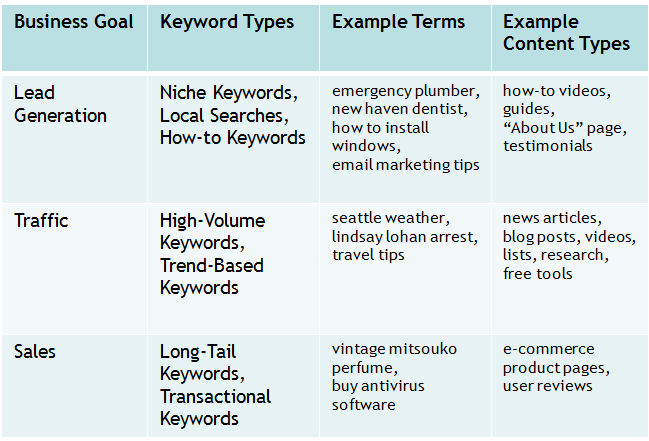
Lately it seems like content marketing is the new SEO. It’s become a bit of a marketing buzzword. But when you slap a trendy label on something, it’s easy to start overthinking it. Ten years ago, everyone with a website was producing content of one kind or another. Then we started worrying about SEO – how to make that content more visible and available to search engine visitors. Now that “content marketing” is the word of the day, people are stressing about what “content” means and how they can “create great content.”
But the truth is, for most businesses, your goals haven’t really changed. You’re still just trying to get people to your website to do whatever it is you want them to do – to buy your widgets, as it were. Advertising is one way to accomplish that; content marketing is another. So when we talk about content marketing, what we’re really talking about is creating whatever kind of online stuff is most likely to attract the kind of people who might like your widgets. It doesn’t matter what kind of widgets you sell; if there’s a market for them at all, there’s probably a kind of content that would speak to that market.
So your job, as a would-be content marketer, is to:
- Define your goals
- Do preliminary keyword research
- Align your goals and keyword types with the right content
Let’s walk through each step in a little more detail.
Step 1: Define Your Goals
As with any marketing strategy, the first step is defining your business goals. What are you trying to achieve with your content? Most businesses with a web presence are trying to achieve some combination of the following goals:
- Lead generation – Service-based companies, many local businesses (e.g. lawyers, dentists), and businesses that sell through a sales force are usually looking for leads. (Your content should inspire trust in your ability to serve the customer.)
- Traffic, return readership – Traffic in and of itself is important for sites supported by ad revenue. More traffic also widens your lead funnel. (Your content should be exceptionally informative and/or entertaining.)
- Product sales – Sales are the primary goal for e-commerce businesses. (Your content should persuade people to buy.)
- Links – In addition to increasing your referral traffic, links give your whole website a lift in authority and rankings. (Your content should be highly shareable and/or a resource worth returning to.)
Having your goals in mind from the start will guide you through the process of strategizing and creating your content.
Step 2: Find Keywords that Align With Your Goals
There are really two ways to proceed from here. You can start by thinking about:
- What kinds of content would attract the people you want to visit your site, and then figure out what types of keywords best align with that type of content, OR
- What kinds of keywords your audience would use, and then create content that suits those keywords.
Frame it in the way that makes most sense to you. Either way, the key point to remember is that your end goal should inform both your keyword research and your content strategy.
Here are some examples of how different goals can align with different keyword and content types:
Depending on the kinds of keywords you’re looking for, you may find that different keyword tools suit your needs. For example, there are tools specific to social media or competitive research, and some keyword tools offer more long-tail terms than others.
Step 3: Putting it All Together
Creating content with your goals and keywords worked out ahead of time makes you much more likely to reach your intended audience. With this process in mind, you’ll be better able to:
- Create content that is suited to your audience, in terms of length, style, tone, format, etc.
- Focus your on-page optimization efforts around the right keyword.
- Promote that content so you get it in front of the right audience at the right time.
- Design your content so as to guide the visitor to the action your want her to take, whether that’s buying your widget or calling in to make an appointment.
Content marketing isn’t really new, but it may be a new way for you to think about reaching potential customers. Instead of going out into the world and screaming for attention (with display ads and push email campaigns, for example), how can you create value that brings potential customers to you?







